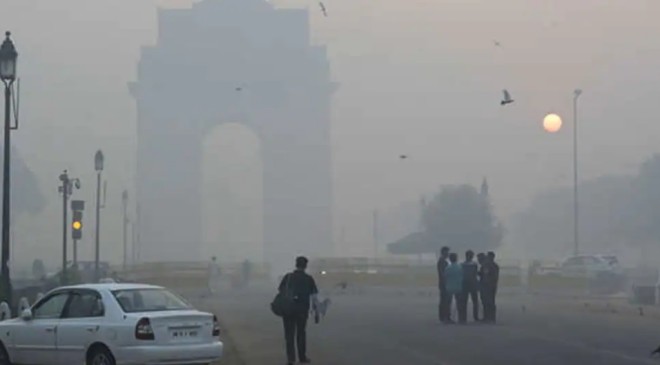The national capital did not record any ‘Severe+’ AQI days in 2022 and woke up to clear skies post-Diwali which also arrived early in October when winter was yet to set in fully and stubble burning had not reached its peak
It is that time of the year again. There is a slight nip in the air. With it, comes the warning of an impending episode of toxic smog that takes hold of the national capital every winter. But, unlike 2022 when Delhi saw a surprising improvement in air quality, its luck may run out this winter as many festivals will coincide with the peak harvesting season.
Delhi did not just see a fall in the number of days with ‘severe’ Air Quality Index (AQI) last year, but it also did not record any ‘severe +’ day when AQI surges past the dangerous mark of 450 and the air turns severely toxic. Diwali had arrived early (in October) when the winter was yet to set in fully and stubble burning had not reached its peak.
Read More: Massive Earthquake Hits Delhi; Tremors Felt Across Noida, Ghaziabad, Gurugram
The year 2022 was also unusual in terms of weather. The winter onset was delayed and it was unusually warm till late December which helped in the dispersion of pollutants. According to scientists, the surface wind speeds too were slightly higher for most times of the year. There was a rare-triple dip La Nina — a global ocean phenomenon that continued for three consecutive years.
“The year 2022 was exceptional. While the control measures may have worked, the weather conditions were also quite favourable and prevented the air quality from worsening further, especially in Northwest India. But as far as the natural climatological factors are concerned this year, they do not seem to be very favourable at present,” said Dr Gufran Beig, Founder-Project Director of SAFAR and currently Chair-Professor at National Institute of Advanced Studies (NIAS), Bangalore.
Read More: SBI set to open sale of electoral bonds from tomorrow: Check face value, eligibility & more
MONSOON’S LINK TO AIR QUALITY
Late September to mid-October is the time when the southwest monsoon retreats from the country. Its withdrawal signals the formation of an anticyclone — fair weather when winds become calmer and skies are mostly clear and direction of the wind changes.
As the winds stagnate, the pollutants are more likely to accumulate in the air. So retreat of monsoon is invariably linked to the drop in air quality in Delhi. However, this year, the retreat of the monsoon is happening later than usual — with a delay of almost nine days.
“The monsoon is still withdrawing from Northwest India. As long as the process continues, the wind speeds will remain moderately high and air quality will be better. Any noticeable increase in pollution levels could be seen towards the end of October, and probably peak in November when pollutants accumulate in the air and winter sets in,” said Dr Beig.
As of Tuesday, the Air Quality Index (AQI) in Delhi remains under moderate levels and is likely to remain over the next six days. The 10-15kmph winds blowing from the North-west will continue to favour dispersion of pollutants from vehicular traffic and industrial emissions, suggests the latest forecast.
POLLUTION LEVEL PEAKS IN NOVEMBER
However, the national capital will face its toughest test in November when the air pollution levels are expected to be at their highest. Despite the ban, the burning of firecrackers during the festival period will coincide with the peak harvesting season when daily fire counts are high.
Last year, Diwali had arrived in late-October when winter was yet to set in fully — so the warm air favoured dispersion of pollutants. However, this time, Diwali falls in mid-November — just when the air pollution levels are highest in Delhi. The incidents of stubble burning normally peak during the period and coupled with the smoke from firecrackers during the festive season and fall in temperatures can create a toxic concoction of pollutants in the air.
To add to it, as many as 682 stubble-burning incidents have already been reported in Punjab, Haryana, Uttar Pradesh, Delhi, Rajasthan and Madhya Pradesh since September 15. Punjab leads with 456 fire counts, followed by Haryana (120) and Uttar Pradesh (57). As many as 155 fire counts were recorded on Monday alone.
However, the Punjab government has vowed to bring the total stubble burning incidents to half of what was recorded in 2022 by end of the harvesting season, and completely eliminate the practice from six districts. Delhi government too has identified 13 hotspots for controlling pollution in the capital and planned strict implementation of court orders on sale and use of firecrackers.
Overall, the weather conditions can only favour accumulation or dispersion of the pollutants, but whether Delhi will escape the toxic impacts of smog this winter or not, depends on how effectively the actual sources of pollution are controlled in the long-term.





































